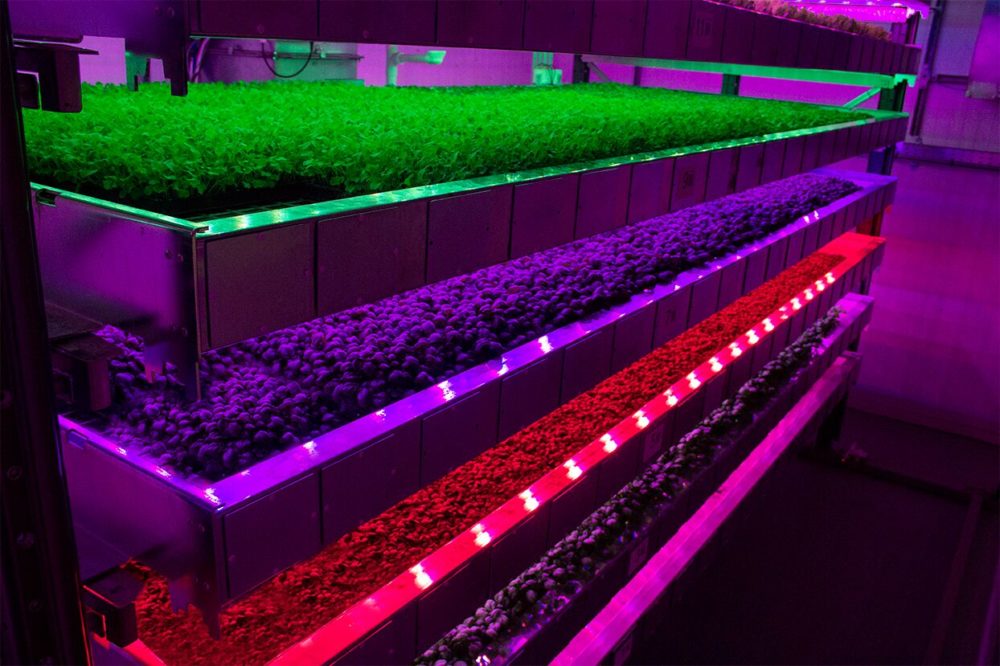Editor’s note: David Farquar is the CEO of vertical farm manufacturer Intelligent Growth Solutions. Prior to IGS, he spent the past 28 years as a founder/CEO, angel investor and business mentor.
The views expressed in this guest article are the authors’ own and do not necessarily represent those of AFN.
I sat down to write this piece during day two of Indoor Ag-Con, the annual conference in Las Vegas, Nevada focused on vertical farming, greenhouse growing and, well, all things indoor ag.
Failure — a word that came up a lot during the show given the industry’s recent failures — is an inevitable stage in most fledgling industries. Geoffrey Moore and the Chasm theory, not to mention Gartner hype-cycles, will tell you that all nascent tech categories generate wannabe operators seeking to apply new technologies (here, the industrial LED) to large industry sectors. Those categories can only mature once leading vendors and leading users / operators emerge and start to work effectively together.
In the case of vertical farming, though, my real concern is that the category is in danger of damaging its reputation more permanently during its infancy because it is very hard, if not impossible, to create a truly viable model with the build-your-own approach most businesses in this industry are currently adopting.
Rather than choosing a side — being a technology provider or a grower — companies are trying to do everything themselves, from building the software to packing the lettuce it sells to grocery retailers. Investors, large existing farmers, corporate off-takers and the like all think the same.
And yet, when we see yet-another announcement about “the world’s biggest vertical farm” run with home-made technology, we know the operating costs mean it will never be economically viable. Costs for just constructing a large-scale vertical farm run in the millions, and that doesn’t even include the costs of cooling, lighting, software and other elements of running a farm. For an industry with such immense costs – and such big risks – it makes no sense for the operator to also build the technology because it will never make that money back selling produce.
When was the last time you saw a farmer build their own combine harvester?
Of course, as a vertical farming infrastructure provider I would say this. But the idea of separating growers and technologists is certainly resonating with the wider industry: IGS’ Series B was 20x over-subscribed, and investors told us that they’d finally seen a viable model for VF investment.
VC aims for high return from high risk and quickly (tech companies). PE looks for lower returns from lower risk operators over a longer run. The VF market is largely made up of low-return (growers) at very high risk (build-your-own). The sector needs business model alignment with investment.
The vertical farming industry has the chance to “Cross the Chasm,” but, if it is to do so, it must grow up and mature: we will NOT replace traditional farming and must not claim to compete with the industry. Instead, we must prove that vertical farming has a role to play in a commercially viable and sustainable future for agriculture.
Timing is critical. I have been predicting for over a year that the fixation with wholesale crop price will be replaced with a realisation that either we can’t fill our shelves at all, or we fill them with trash.
We are now seeing major retailers, food service, food manufacturers and hospitality operators approaching IGS’ customers urgently looking for multi-year supply contracts.
New agritech innovations need to be integrated into existing agricultural operations, establishing a hybrid system: as such, a vertical farm should be considered just one of the tools in a grower’s toolbox, complementing existing broadacre field and greenhouse/nursery growing.
Growers, wholesalers and the off-takers need to work with the builders of infrastructure to create a far more robust, reliable and food-secure supply chain.




